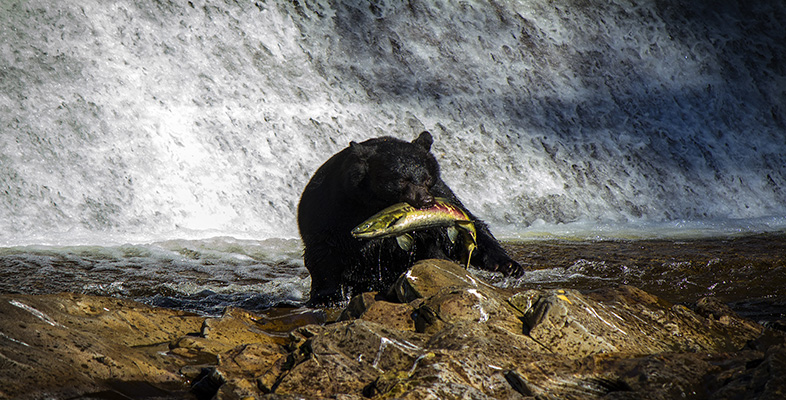2 The ecology of mammals
2.1 Trophic levels
'All flesh is grass'; this somewhat paradoxical biblical quotation really is only a restatement of what was more formally explained in previous units in this series. The materials needed by plant eaters (see course S182_4) for the growth of 'flesh' - by which I mean not just the meaty muscular parts, but all of the body - must come entirely from their plant food. Plants grow using the Sun's energy in the process of photosynthesis. Plants occupy the lowermost of a succession of feeding levels, a position known as trophic level 1 (trophic means related to nutrition). The herbivores that were the subject of S182_4 therefore occupy the next level up - trophic level 2. Those carnivorous animals feeding on herbivores, of the type discussed in course S182_5, must therefore be in trophic level 3. They have the capacity to use some of the energy and materials locked up in the 'plant-eater flesh' food that they consume to build up their own bodies. Thinking in terms of energy flow through these levels, a proportion of the solar energy captured by plants in trophic level 1 has passed through into trophic levels 2 and 3.
Question 1
Question: Relationships are often expressed as flow charts, where annotated boxes are linked by arrows. Sketch a flow chart to show the movement of solar energy through different trophic levels.
Answer
What this simple relationship reveals is that animals depend on plants for their energy supply - a dependence evident in the use of the term 'primary producer' (or more simply 'producer') to describe plants in trophic level 1; herbivores and carnivores are termed primary and secondary consumers respectively. What is also evident is that in any feeding relationship, in addition to the materials in food passing from one organism to another - such as calcium from the soil into grass and hence into rabbits and then into stoats to help build bones - there is also a flow of energy. In the next section, you'll meet a number of examples of particular feeding relationships, identifying 'what eats what'; these are more formally termed food chains. As you'll see, a great many food chains have a plant at the bottom; at the top is an animal that is eaten by no other. The organisms that interact in this way exist within a particular ecosystem, which is the collective term used for all the living and non-living components that make up a particular part of the environment.

